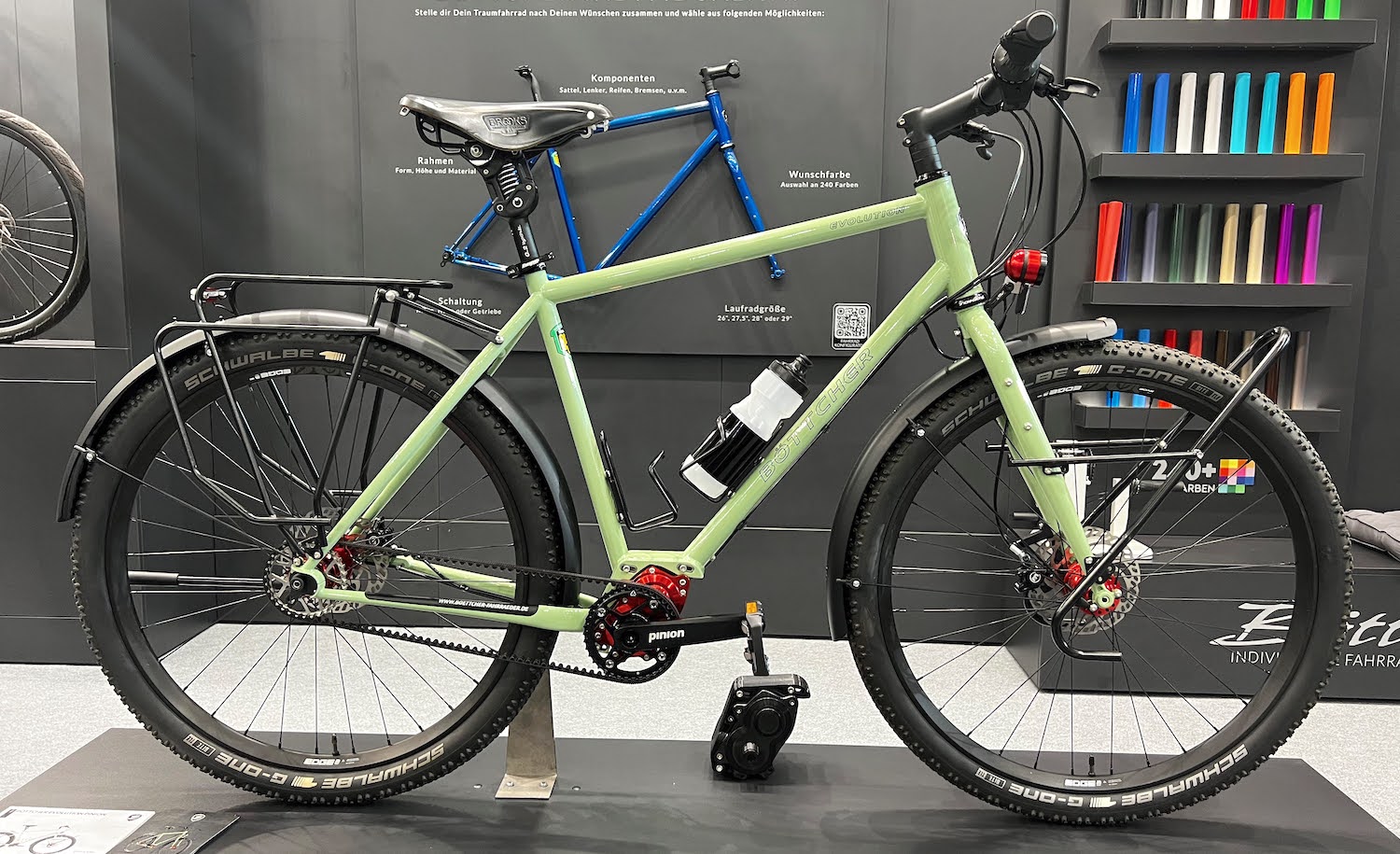Table of Contents
- What Is Frame Stiffness?
- Describing Stiffness
- What Factors Affect Frame Stiffness?
- Frame Stiffness For Touring and Bikepacking
- Finding The Goldilocks Zone
- Are Stiffer Bikes Faster?
- Are Steel Frames Less Stiff Than Titanium, Aluminium and Carbon?
- Small Bike Sizes
- The Custom Bike Advantage
- Aluminium and Carbon Bikes With Similar Stiffness Values To Steel/Ti
- DIY Frame Stiffness Tests
- Other Ways To Determine Frame Stiffness
- Summary
The stiffness of your frame plays a very large role in how your bike feels underneath you.
People often talk about bikes having a ‘dead’ feeling when they’re too stiff, a ‘noodly’ feeling when they’re too flexy and a ‘lively’ feeling when they’re just stiff enough.
After owning bikes that are stiff, flexy and everything in between, I believe there’s a Goldilocks zone for frame stiffness, where there is noticeable but minor amounts of frame flex, contributing to that buttery smooth ride that we all desire.
We are going super deep down the frame stiffness rabbit hole today. We’ll be discussing what frame stiffness is, when it’s important, the relationship between stiffness and frame materials, whether frame flex slows you down and how you might go about finding the perfect stiffness on your personal bikes.
What Is Frame Stiffness?
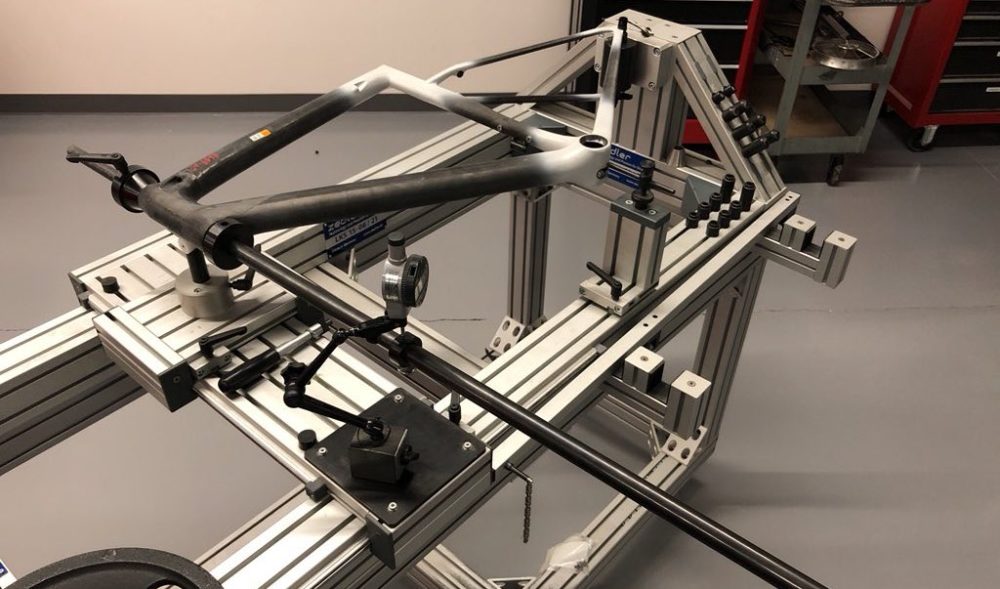
We can assess the stiffness of a frame from a number of different locations.
There’s the steering stiffness, which is the amount of movement the frame twists at the head tube. This type of flex is most noticeable when you push down on the pedals and pull up on the handlebar. A bike that has a high steering stiffness will feel especially snappy and more reactive to your steering inputs. Keep in mind that the overall steering stiffness is also largely dependent on the stiffness of your fork, front wheel and handlebar.
Then there’s the pedalling stiffness, which is the amount of movement your frame deflects near the bottom bracket shell when you pedal.
And finally, we can look at the vertical stiffness of a frame, which I’ve previously discussed in this article about frame comfort.
To give you a sense of the range of stiffness in a bike frame, the most rigid mass-produced frames are approximately twice as stiff as the least rigid frames.
Describing Stiffness

I like to describe frame stiffness on a spectrum between two points.
A stiff or responsive bike has a snappy and direct feel to it. Under acceleration, it will have that up-and-go bike feel, but will also feel harsher over road imperfections. Additionally, there is a case to be made that the braking performance and traction is not as good when cornering a stiffer bike, so stiffness is only good to a point.
A flexy or forgiving bike is less communicative of the road or trail below and will feel laggier under acceleration. It will move around more with your rider inputs, which feels nice, again, to a point.
What Factors Affect Frame Stiffness?
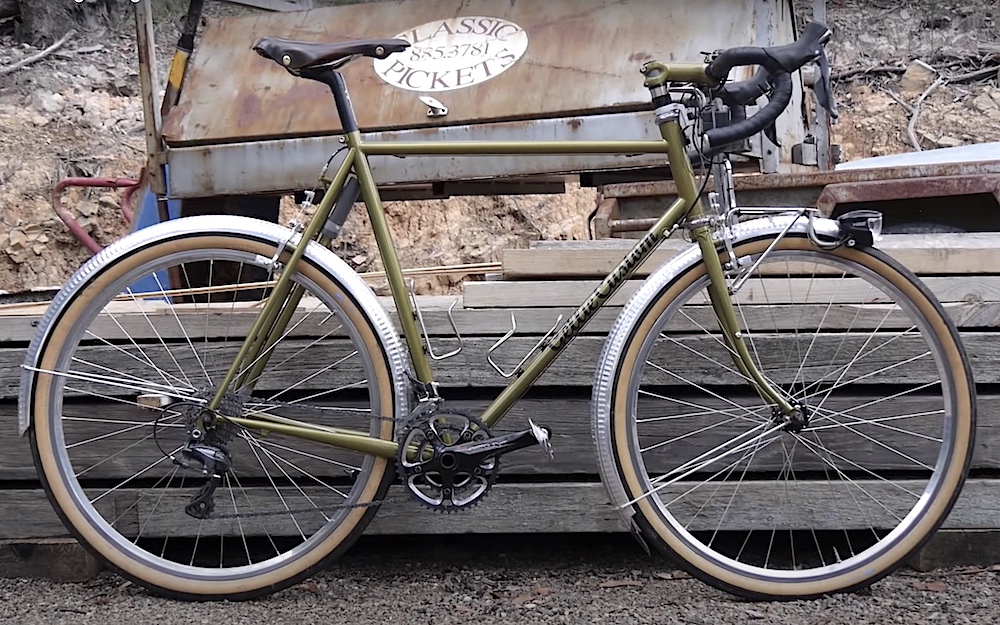
A bike frame that feels stiff to one rider, may feel flexy to another. This is because there are multiple factors determining how much your bike will move underneath you.
First, we have rider factors. These include your power output, how much you weigh, and your riding style – for example, whether you’re riding out-of-the-saddle and accelerating quickly, or whether you’re just cruising along.
Then there’s the bike factor. The intended use of the bike will require varying degrees of stiffness too. For example, a hardcore hardtail will have higher stiffness requirements than an ultralight xc hardtail given the larger forces at play.
And lastly, there’s the luggage factor. Bikes intended to carry luggage require additional frame stiffness or the frame may become too noodly to ride.
Frame Stiffness For Touring and Bikepacking

Touring and bikepacking bikes support front and rear luggage, and your frame is the medium that resists the twisting forces between these two points. When it comes to the handling, stability and general feel of a bike laden with luggage, touring frames need to be built extra stiff.
The downside to a bike that resists twisting forces is that it cannot be optimally tuned for riding without luggage – that is, there will not be the minimal amounts of flex that make the bike feel ‘lively’ to ride, unless it is all loaded up.
You should know that the pedalling stiffness also needs to be super stiff with belt drive touring bikes. As the beltline has a low tolerance for side-to-side flex, belt drive bikes are stiffer at the bottom bracket than any other bike, which ensures the belts cannot skip.
You can read a more comprehensive article about frame stiffness for touring bikes HERE.
Finding The Goldilocks Zone

Let’s go over some rider scenarios to get a sense of when a rider can achieve noticeable but minor amounts of flex in their bike.
Heavier rider, higher power output
A higher stiffness will be required to combat both the ground forces when cornering and when pushing hard on the pedals.
Lighter rider, lower power output
On the opposite end of the weight and strength spectrum, a reduced frame stiffness will allow a lighter rider to achieve the equivalent ride feel.
Just cruising along
With a mellow riding style, a lower frame stiffness will dance around more with lighter inputs.
More aggressive riding style
If you’re out-of-the-saddle sprinting, cornering hard and just generally pushing the bike’s limits, you’ll likely prefer additional frame stiffness.
Flat handlebars or wide drop bars
Wider handlebars have more steering leverage, which makes it easier to flex your frame torsionally. To achieve the equivalent ride feel, a well-designed frame with a wide handlebar will have a higher steering stiffness.
Are Stiffer Bikes Faster?
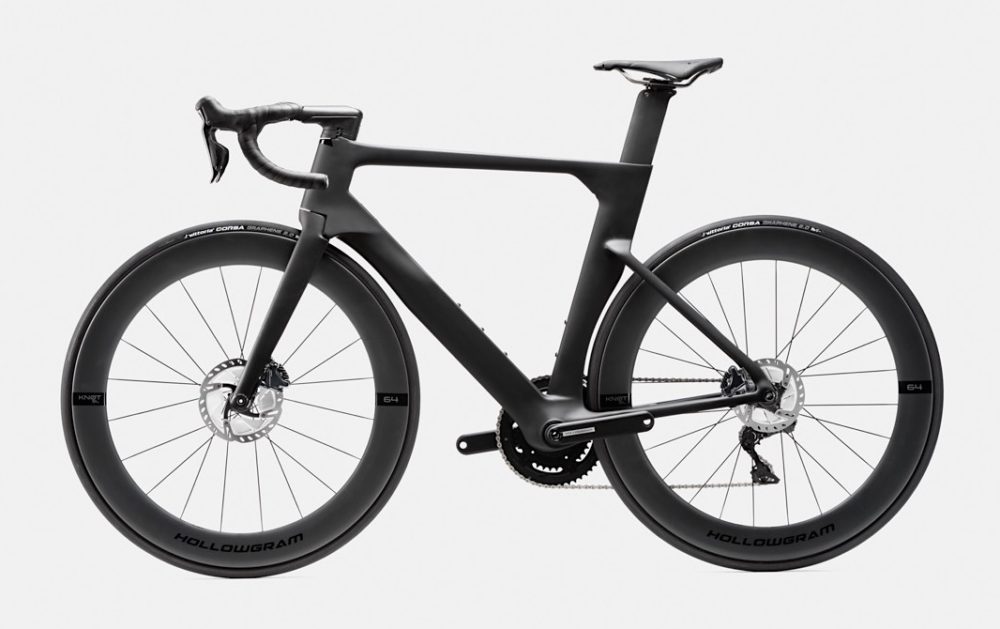
It is generally assumed that a bike with high pedalling stiffness is faster because there is less energy lost to the frame.
But outside of someone who is using their bike for sprint finishes, as long as your brakes don’t rub or your gears shift under load, a bike with half the stiffness at the bottom bracket is unlikely to make a meaningful difference to your cycling speed – simply because the range of deflection is so small.
The aerodynamics of a bike and rider, as well as the rolling resistance of your tyres, are orders of magnitude more important.
Some have hypothesised (and even field-tested) that most of the deflection force is returned back to the drivetrain on a flexy bike, but I find this scenario quite unlikely.
Here’s why. The frame deflection from your pedal stroke slowly builds from 1 o’clock to 3 o’clock, then slowly releases by 5 or 6 o’clock. It isn’t released in one go (with most of the variables locked in place) as some experiments have attempted to show.
In the noisy and dynamic environment of pedalling a bike on the open road, frame deflection is one of the dozens of variables that store and release energy in the system. It’s unlikely that one variable (frame flex) is responsible for the majority of the energy storage and release.
A more likely scenario is that the energy returns in part to your drivetrain, but is also lost as heat to your wheels, tyres, crankset, pedals, shoes, feet, ankles, legs etc.
Are Steel Frames Less Stiff Than Titanium, Aluminium and Carbon?
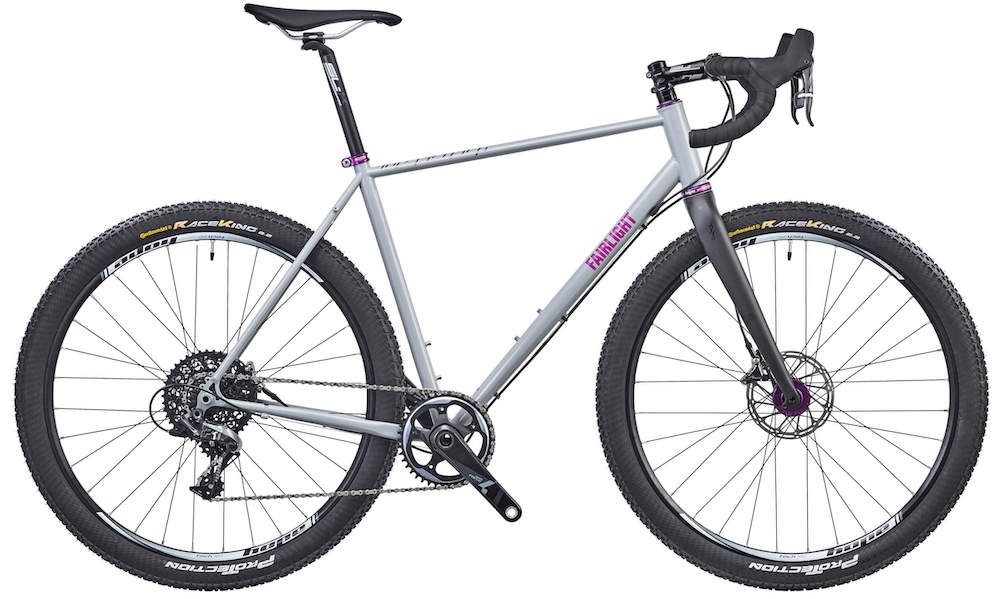
The data we will be using today comes from the legends at Tour Magazin in Germany.
They have created a standardised frame deflection test, and have over 1000 road and gravel bikes measured (of roughly the same size) for us to compare. I have kept a record of almost every bike ever tested, which will allow us to understand the deflection values of different frame materials.
The “N/mm” values are the amount of force (in newtons) required to move the head tube and bottom bracket shell a millimetre. As this is a static test, this information is not 100% definitive about how a bike will flex under a rider – although, when you look at the entire data set, the force per millimetre values correlate around the intended use of different bikes.
For example, an aero race bike used in the Tour de France usually offers a minimal amount of frame deflection, and a dedicated touring bike is often stiffer again.
Steering Stiffness // Head Tube Deflection Test – 56cm Bike (Average)
Aluminium – 105N/mm
Carbon – 97N/mm
Steel – 88N/mm
Titanium – 86N/mm
The head tube data shows that steel or titanium frames have, on average, less steering stiffness. Aluminium bikes work out to be approximately 20% stiffer than both titanium and steel, while carbon bikes are closer to 10% stiffer.
Pedalling Stiffness // Bottom Bracket Deflection Test – 56cm Bike (Average)
Aluminium – 63N/mm
Carbon – 62N/mm
Steel – 53N/mm
Titanium – 53N/mm
At the bottom bracket shell, the carbon and aluminium frames are again stiffer, with 20% more force required to move the cranks a millimetre than either titanium or steel.
These lower frame deflection values at both the bottom bracket and head tube could explain why steel and titanium bikes are often considered to have a nicer ‘ride feel’.
But this isn’t the end of the story – let’s take a look at the total range of deflection on all bikes tested.
Head Tube Deflection Test – 56cm Bike (Range)
Aluminium – 69 to 145N/mm
Carbon – 63 to 131N/mm
Steel – 69 to 115N/mm
Titanium – 75 to 106N/mm
Bottom Bracket Deflection Test – 56cm Bike (Range)
Aluminium – 45 to 87N/mm
Carbon – 39 to 84N/mm
Steel – 42 to 77N/mm
Titanium – 44 to 68N/mm
Above is the lowest and highest deflecting bike of each frame material. When we look at these ranges, it is clear that a bicycle engineer can design a very responsive (stiff) or forgiving (flexy) bike using any frame material.
Small Bike Sizes
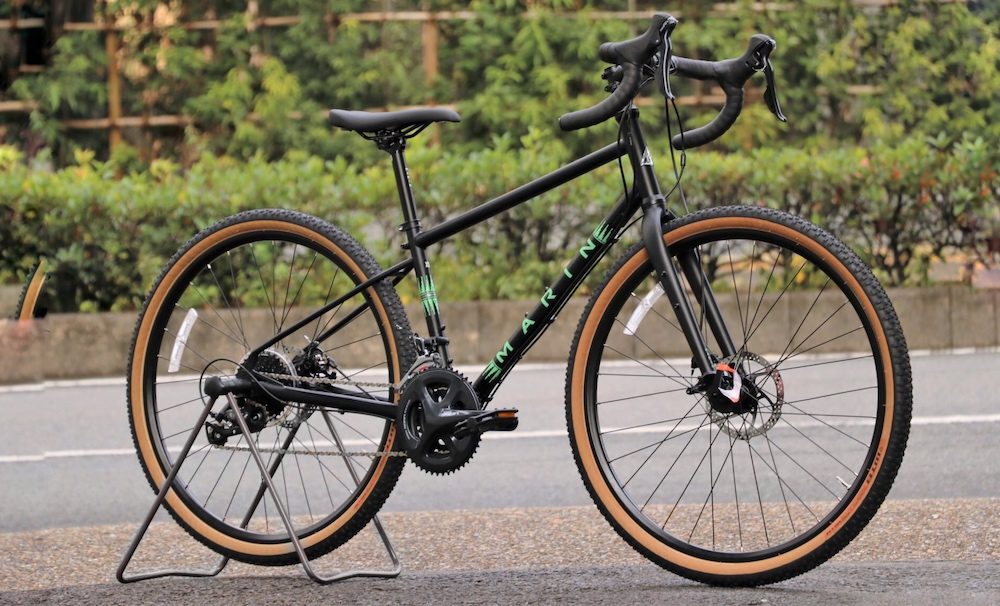
So, how does a small frame compare to a big frame? Tour Magazin has the data to help us here too.
Steering Stiffness // Head Tube Deflection Test (Average)
Aluminium (50cm) – 101N/mm
Aluminium (56cm) – 105N/mm
Carbon (50cm) – 95N/mm
Carbon (56cm) – 97N/mm
Pedalling Stiffness // Bottom Bracket Deflection Test (Average)
Aluminium (50cm) – 66N/mm
Aluminium (56cm) – 63N/mm
Carbon (50cm) – 62N/mm
Carbon (56cm) – 62N/mm
The good news is that the average small bike frame is not obnoxiously stiff, which could easily be the case as smaller frame triangles are inherently stiffer than bigger ones. The fact that the stiffness values are similar means that bike engineers are doing a somewhat good job at optimising the ride quality of their bikes.
But there is still room for improvement – smaller riders are often lighter and with less power output. This would mean that many smaller riders would achieve a similar ‘ride feel’ with more frame flex when compared to taller riders.
But here’s the issue. Bikes need to be designed around the heaviest, strongest rider. An example, Australian sprinter Caleb Ewan rides an XS sized bike, and it’s safe to say his power output would be orders of magnitude different to the average rider of his height.
The Custom Bike Advantage
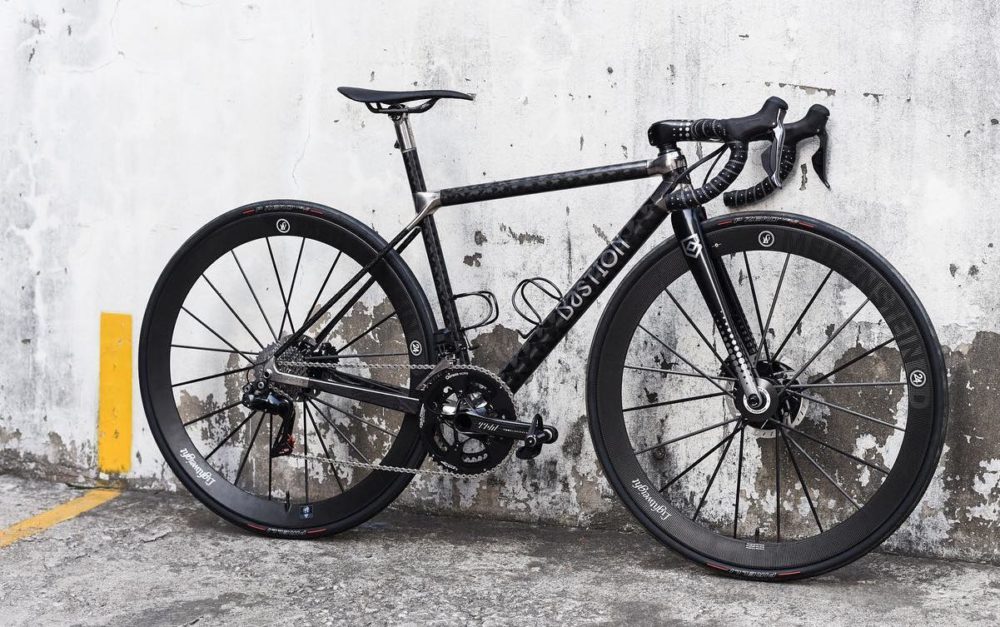
While many people get custom bikes so that they can perfect their bike fit, a better reason to get a custom frame might be to optimise the ride feel.
As most bikes are designed around the heaviest and strongest riders, the cyclists who have the most ride feel to gain from a custom bike are likely those who are lighter and with a lower power output than typical.
Bastion Cycles deserve a shoutout here for allowing their customers to specify their preferred level of frame stiffness, both torsionally and vertically, as part of the ordering process. Bastion can offer this level of customisation because they print their own titanium 3D lugs and construct their own filament-wound carbon tubes, which is pretty damn cool.
In addition, the Bastion order form has the stiffness data of a handful of popular bikes baked into it, which gives their customers a sense of how their new frame will feel underneath them.
Aluminium and Carbon Bikes With Similar Stiffness Values To Steel/Ti
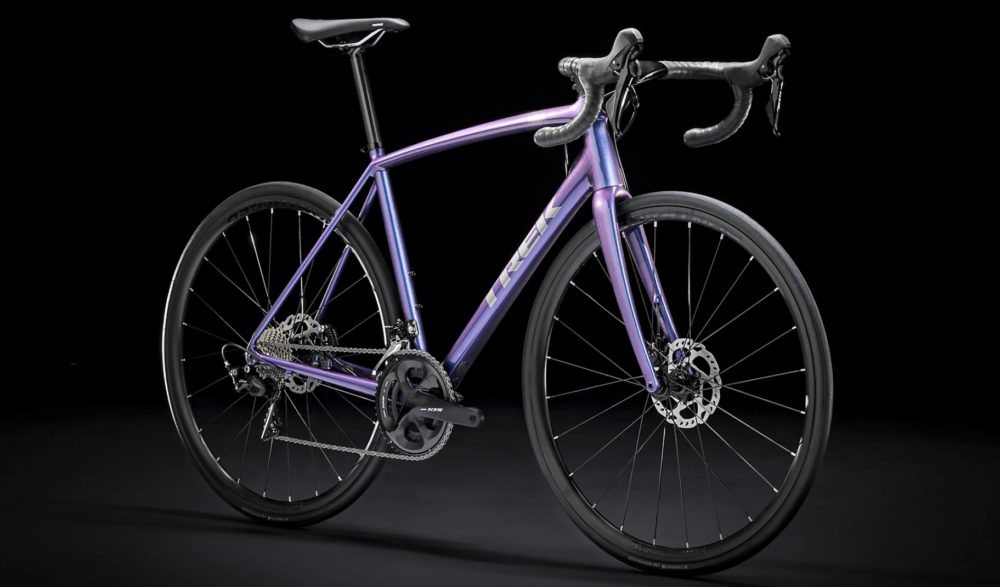
We now know that steel and titanium bikes are, on average, less stiff than carbon and aluminium bikes.
But given there’s a large range of deflection values across all frame materials, let’s say you wanted to match the flex characteristics of the average titanium or steel bike. Or perhaps you’re a bit lighter and you’re looking for something with a bit more give.
Lower stiffness bike models:
Aluminium: Trek Emonda ALR5 (road), Giant Contend (endurance), Giant Revolt (gravel)
Carbon: Trek Emonda (road), Trek Madone (road), Felt AR (road), Trek Domane (endurance), Giant Defy (endurance), Look bikes (all)
Almost all Trek and Look road bikes seem to have more torsional flex baked in. Specialized is currently trending towards less frame stiffness with their latest model Tarmac SL7 and Aethos road bikes. Giant endurance and gravel bikes are also tested to be more forgiving.
Higher stiffness bike models:
Cannondale System Six (road), Specialized Allez Sprint (road), Specialized Venge (road), Cannondale CAAD Optimo (road), Specialized Sequoia (gravel), Merida Silex Carbon (gravel), Felt Broam (gravel), Cube bikes (all).
Aero race bikes and low-cost aluminium bikes are usually the stiffest bikes of all. The data also suggests that almost all Cube bikes are built particularly stiff. And for bikepacking and touring, the Specialized Sequoia, Merida Silex and Felt Broam will ride at their best with luggage attached.
DIY Frame Stiffness Tests
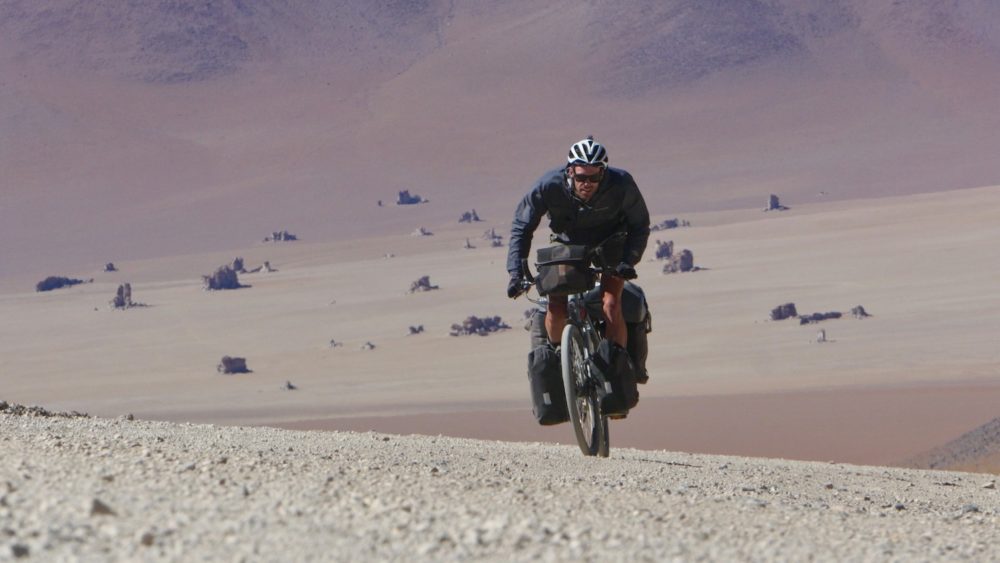
An excellent way to get a sense of the frame stiffness of different bikes is to benchmark them against each other.
Here are two static tests I do before riding a new bike:
1. A front end wiggle test. This involves gripping the seat between your legs and pushing and pulling on your handlebars. You will see and feel the frame twist underneath you.
2. A bottom bracket deflection test. This involves locking both brakes and applying pressure to your forward pedal. You will see the frame deflect to the side.
As these tests are static, they will only provide a ‘snapshot’ of how stiff a bike will ride on the road, so you need to go for a test ride too.
I recommend taking notes on how stiff a bike feels in the static tests as well as out on the road. Testing multiple bikes statically and dynamically will give you a sense of what ride characteristics you prefer.
And if you’re test riding a touring or bikepacking bike, see if you can do so with luggage attached.
Other Ways To Determine Frame Stiffness
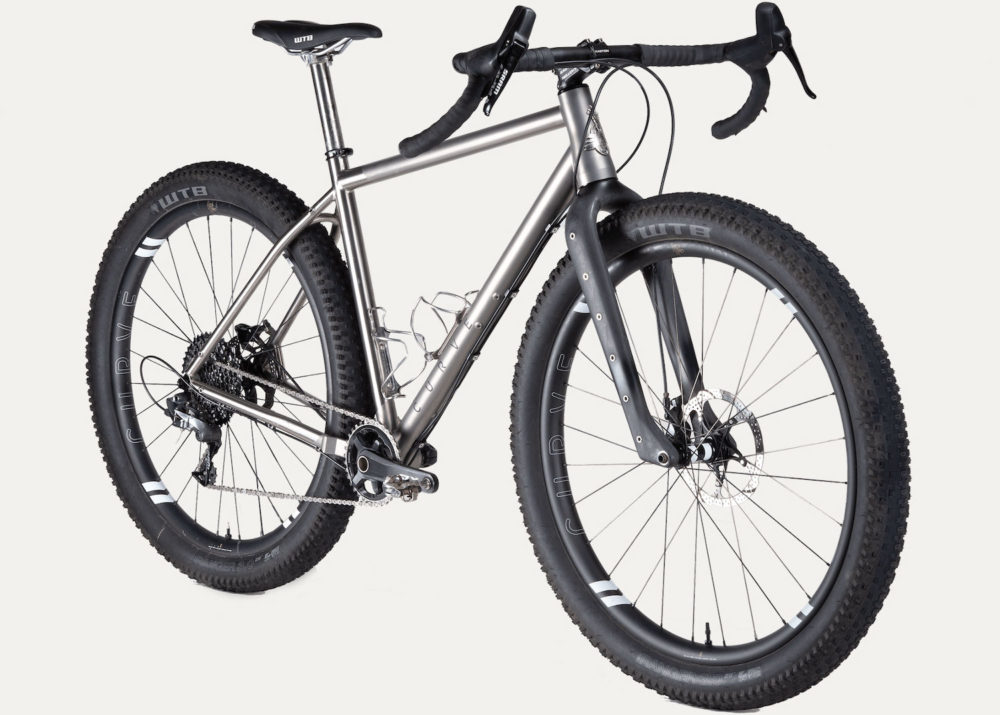
If you don’t have access to test bikes, it’s much harder to know how a bike will move underneath you.
The intended use of the bike is a good clue for how a bike will ride. A road race bike will usually be stiffer than a road endurance bike. A touring bike will usually be stiffer than a bikepacking bike.
With titanium and steel, it’s easier to predict ride characteristics because the largest diameter frame tubes are almost always the stiffest. This is because when you double a tube’s diameter and wall thickness, it becomes 16 times stiffer!
Carbon and aluminium are much harder to predict as there are more variables associated with the frame design. In this case, it will pay to read some reviews from journalists that you trust, who are ideally a similar height and weight to you.
Summary
Finding the Goldilocks zone of frame stiffness requires careful consideration of your physical attributes as well as your riding style, bike setup and intended use of your bike.
Interestingly, the data suggest that bikes of any frame material can be engineered to ride in a forgiving or responsive way. However, a titanium and steel bike will have a lower frame stiffness on average, which could be enough to get a lighter cyclist on a more suitable bike. But this isn’t a given – the stiffest titanium and steel bikes are much stiffer than the average aluminium or carbon bikes.
At the end of the day, I’d recommend testing lots of bikes to get a sense of the ride characteristics that you prefer and go from there.
Read About Frame Comfort HERE and Different Frame Materials HERE


